Shear Behavior of Reinforced Post-Filling Coarse Aggregate Concrete Beams Produced by Creative Construction Process
Abstract
:1. Introduction
2. Research Significance
3. Experimental Program
3.1. Mixture Design
3.2. Material Properties
3.3. Beam Specimen Design
3.4. Test Setup and Loading Protocol
4. Results and Discussion
4.1. Experimental Observations
4.2. Influence of Various Factors on the Load–Deflection Curve
4.3. The Effect of Post-Filling Aggregate Ratio
4.4. The Effect of Shear Span Ratio
4.5. The Effect of Stirrup Reinforcement Ratio
4.6. Comparison of Theoretical and Experimental Results
5. Conclusions
- (1)
- The compressive strength of concrete increases with the increase in post-filling aggregate filling ratio, reaching the maximum at 20% PFR (post-filling coarse aggregate ratio). The compressive strength decreases at a 25% PFR.
- (2)
- At the same concrete strength grade, the cracking shear force Vcr of the beam increases with the increase in the PFR ratio. The ultimate shear capacity of concrete beam specimens made of post-filling aggregate is higher than that of reference concrete. At the same PFR ratio, the ultimate shear capacity of the beam increases with the increase in the concrete grade.
- (3)
- Experimental results show that both the cracking shear force and ultimate shear capacity decrease with the increase in the shear span ratio.
- (4)
- The ultimate shear capacity of the beam increases with the increase in the stirrup ratio. The stirrup reinforcement ratio exhibits a noticeable influence on the enhancement of the ultimate shear capacity of the beam.
- (5)
- The code GB50010 provides conservative predictions for ultimate shear capacities Vu for all tested beam specimens.
Author Contributions
Funding
Data Availability Statement
Conflicts of Interest
Notations
| b | width of concrete beam specimen |
| h | height of concrete beam specimen |
| h0 | effective height of beam specimen |
| fcu | compressive strength of concrete |
| ft | tensile strength of concrete |
| λ | the shear span-to-depth ratio |
| ρsv | the stirrup reinforcement ratio |
| Vcr | the cracking shear force |
| Vu | the ultimate shear capacity |
| Vu, exp | the experimental ultimate shear capacity |
| Vu cal | the calculated ultimate shear capacity according to GB50010 |
| Δu | mid-span deflection at shear ultimate bearing capacity |
References
- Shen, W. Effect of Scattering-Filling Aggregate Technology on the Mechanical Properties of Concrete. J. Build. Mater. 2007, 10, 711–716. (In Chinese) [Google Scholar]
- Shen, W.; Li, J.; An, T.; Wu, H.; Cheng, J.; Zhang, X. Research on The Coarse Aggregate Interlocking High Performance Concrete. J. Wuhan Univ. Technol. 2011, 12, 18–21. (In Chinese) [Google Scholar]
- Shen, W. Preparation and Properties of High Strength and High Performance Coarse Aggregate Interlocking Concr. J. Chin. Ceram. Soc. 2007, 35, 624–628. (In Chinese) [Google Scholar]
- Li, J. Study on Coarse Aggregate Interlocking Pavement. Ph.D. Thesis, Wuhan University of Technology, Wuhan, China, 2011. (In Chinese). [Google Scholar]
- Jia, J.; Cao, Q.; Luan, L.; Wang, Z.; Zhang, L. Mechanical Properties of Large Slump Concrete Made by Post-Filling Coarse Aggregate Mixing Procedure. Materials 2020, 13, 2761. [Google Scholar] [CrossRef]
- Wang, D. Experimental Study on Mechanical Properties and Frost Resistance of High Performance Pumping Concrete with After-mixing Coarse Aggregate. Master’s Thesis, Dalian University of Technology, Dalian, China, 2015. (In Chinese). [Google Scholar]
- Shen, W.; Cai, Z.; Zhang, T.; Abu, D.; Hu, J.Q.; Zhou, M.K. Influence of Scattering-Filling Coarse Aggregate on Properties of Self-compacting Concrete. J. Build. Mater. 2009, 12, 345–347. (In Chinese) [Google Scholar]
- Hong-Kun, M.; Yu, T.; Wei-Guo, S.; Li-Li, C.; Yong-Ming, X.; Li, Z. Preparation and Investigation of Ultra-high Strength Scattering-filling Aggregate Concrete. J. Wuhan Univ. Technol. 2012, 1, 8. (In Chinese) [Google Scholar]
- Luan, L. Experimental Study on Mechanical Properties of a New Type of Concrete; Dalian University of Technology: Dalian, China, 2014. (In Chinese) [Google Scholar]
- Rao, G.A.; Prasad, B.R. Influence of the roughness of aggregate surface on the interface bond strength. Cem. Concr. Res. 2002, 32, 253–257. [Google Scholar] [CrossRef]
- Meddah, M.S.; Zitouni, S.; Belâabes, S. Effect of content and particle size distribution of coarse aggregate on the compressive strength of concrete. Constr. Build. Mater. 2010, 24, 505–512. [Google Scholar] [CrossRef]
- Özturan, T.; Çeçen, C. Effect of coarse aggregate type on mechanical properties of concretes with different strengths. Cem. Concr. Res. 1997, 27, 165–170. (In Chinese) [Google Scholar] [CrossRef]
- Shi, C. Strength, pore structure and permeability of alkali-activated slag mortars. Cem. Concr. Res. 1996, 26, 1789–1799. [Google Scholar] [CrossRef]
- Aïtcin, P.-C.; Mehta, P.K. Effect of coarse aggregate characteristics on mechanical properties of high-strength concrete. Mater. J. 1990, 87, 103–107. [Google Scholar]
- Zhou, F.P.; Lydon, F.D.; Barr, B.I.G. Effect of coarse aggregate on elastic modulus and compressive strength of high performance concrete. Cem. Concr. Res. 1995, 25, 177–186. [Google Scholar] [CrossRef]
- Kaplan, M.F. Flexural and compressive strength of concrete as affected by the properties of coarse aggregates. J. Proc. 1959, 55, 1193–1208. [Google Scholar]
- Giaccio, G.; Rocco, C.; Violini, D.; Zappitelli, J.; Zerbino, R. High-strength concretes incorporating different coarse aggregates. Mater. J. 1992, 89, 242–246. [Google Scholar]
- Akçaoğlu, T.; Tokyay, M.; Çelik, T. Effect of coarse aggregate size on interfacial cracking under uniaxial compression. Mater. Lett. 2002, 57, 828–833. [Google Scholar] [CrossRef]
- Grassl, P.; Wong, H.S.; Buenfeld, N.R. Influence of aggregate size and volume fraction on shrinkage induced micro-cracking of concrete and mortar. Cem. Concr. Res. 2010, 40, 85–93. [Google Scholar] [CrossRef] [Green Version]
- Counto, U.J. The effect of the elastic modulus of the aggregate on the elastic modulus, creep and creep recovery of concrete. Mag. Concr. Res. 1964, 16, 129–138. [Google Scholar] [CrossRef]
- Cao, Q.; Jia, J.; Zhang, L.; Ye, H. Steel reinforced post-filling coarse aggregate concrete columns under eccentric compression. Constr. Build. Mater. 2020, 270, 121420. [Google Scholar] [CrossRef]
- Cao, Q.; Jia, J.; Zhang, L.; Ye, H.; Lv, X. Experimental study of axial compression of reinforced concrete columns made by environment-friendly post-filling coarse aggregate process. Struct. Concr. 2021. Online. [Google Scholar] [CrossRef]
- Jia, J.Q.; Li, H.N.; Tu, B.; Wu, F.; Feng, S.; Gao, J.C. Construction Technology for One Kind of Concrete. Chinese Patent ZL201510416607.2, 2015. (In Chinese). [Google Scholar]
- Ministry of Housing and Urban-Rural Construction of the People’s Republic of China. Technical Code for Application of Fly Ash Concrete; GB 50146-2014; China Building Industry Press: Beijing, China, 2014. (In Chinese)
- Shih-Wei, C.; Chung-Chia, Y.; Ran, H. Effect of aggregate volume fraction on the elastic moduli and void ratio of cement-based materials. J. Mar. Sci. Technol. 2000, 8, 1–7. [Google Scholar]
- Stock, A.F.; Hannantt, D.J.; Williams, R.I.T. The effect of aggregate concentration upon the strength and modulus of elasticity of concrete. Mag. Concr. Res. 1979, 31, 225–234. [Google Scholar] [CrossRef]
- Pradhan, S.; Kumar, S.; Barai, S.V. Recycled aggregate concrete: Particle Packing Method (PPM) of mix design approach. Constr. Build. Mater. 2017, 152, 269–284. [Google Scholar] [CrossRef]
- Ministry of Housing and Urban-Rural Construction of the People’s Republic of China. Technical Specification for Construction of Concrete Pumping; JGJ/T 10-2011; China Building Industry Press: Beijing, China, 2011. (In Chinese)
- Ministry of Housing and Urban-Rural Construction of the People’s Republic of China. Standard for Testing Method of Concrete Structures; GB 50152-2012; China Building Industry Press: Beijing, China, 2012. (In Chinese)
- Ministry of Housing and Urban-Rural Construction of the People’s Republic of China. Design Code for Concrete Structures; GB 50010-2010; China Building Industry Press: Beijing, China, 2010. (In Chinese)
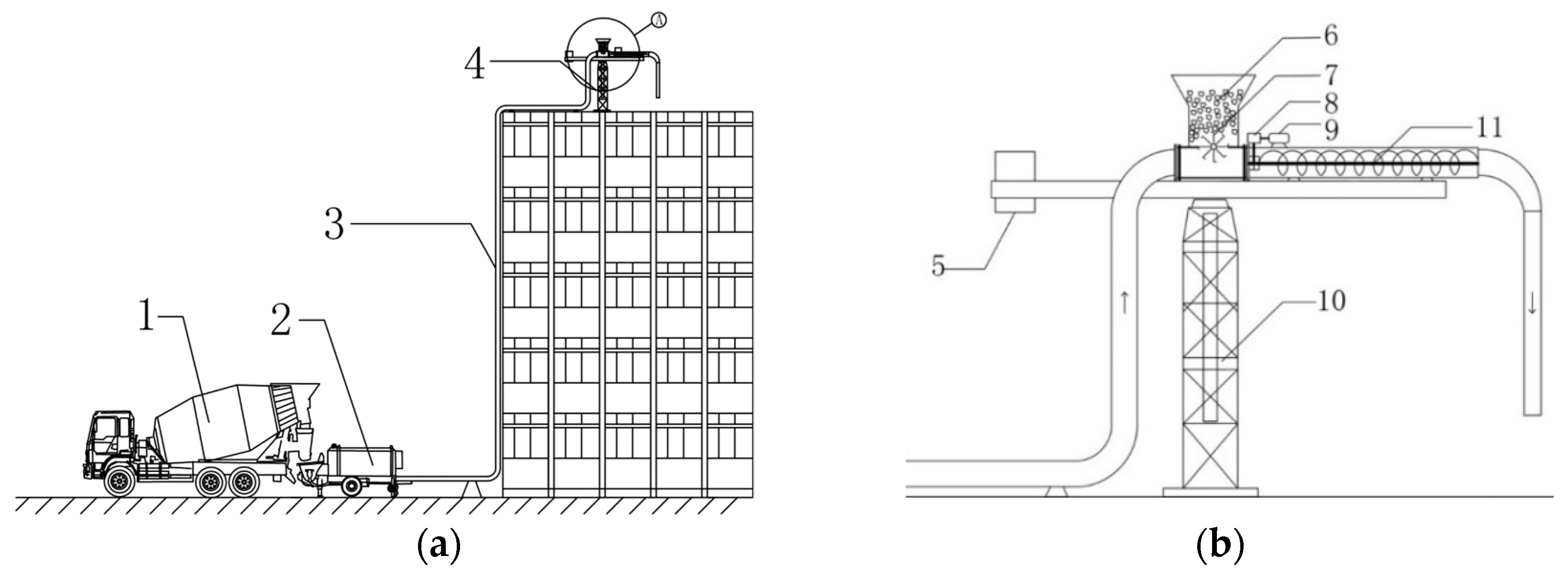
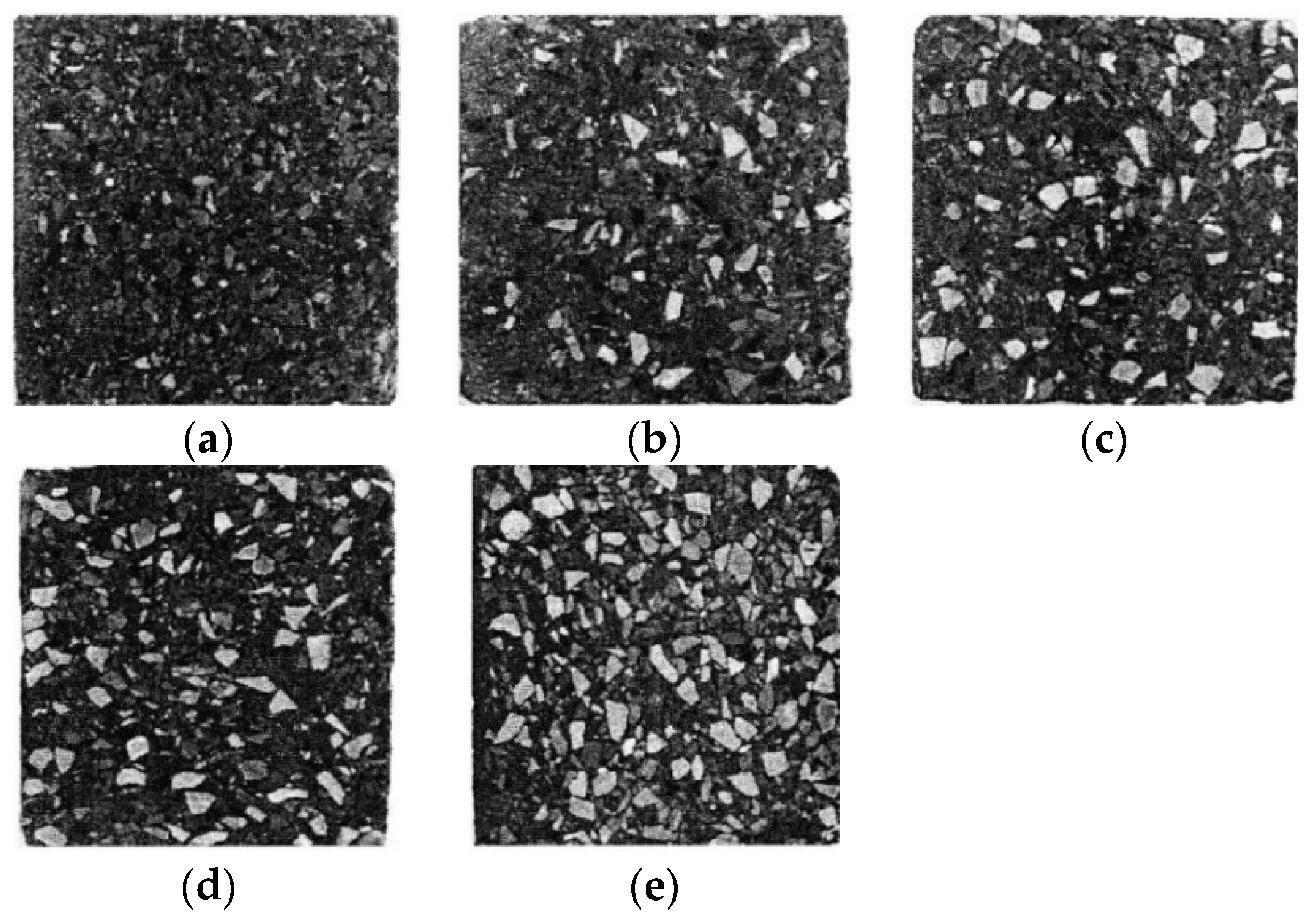
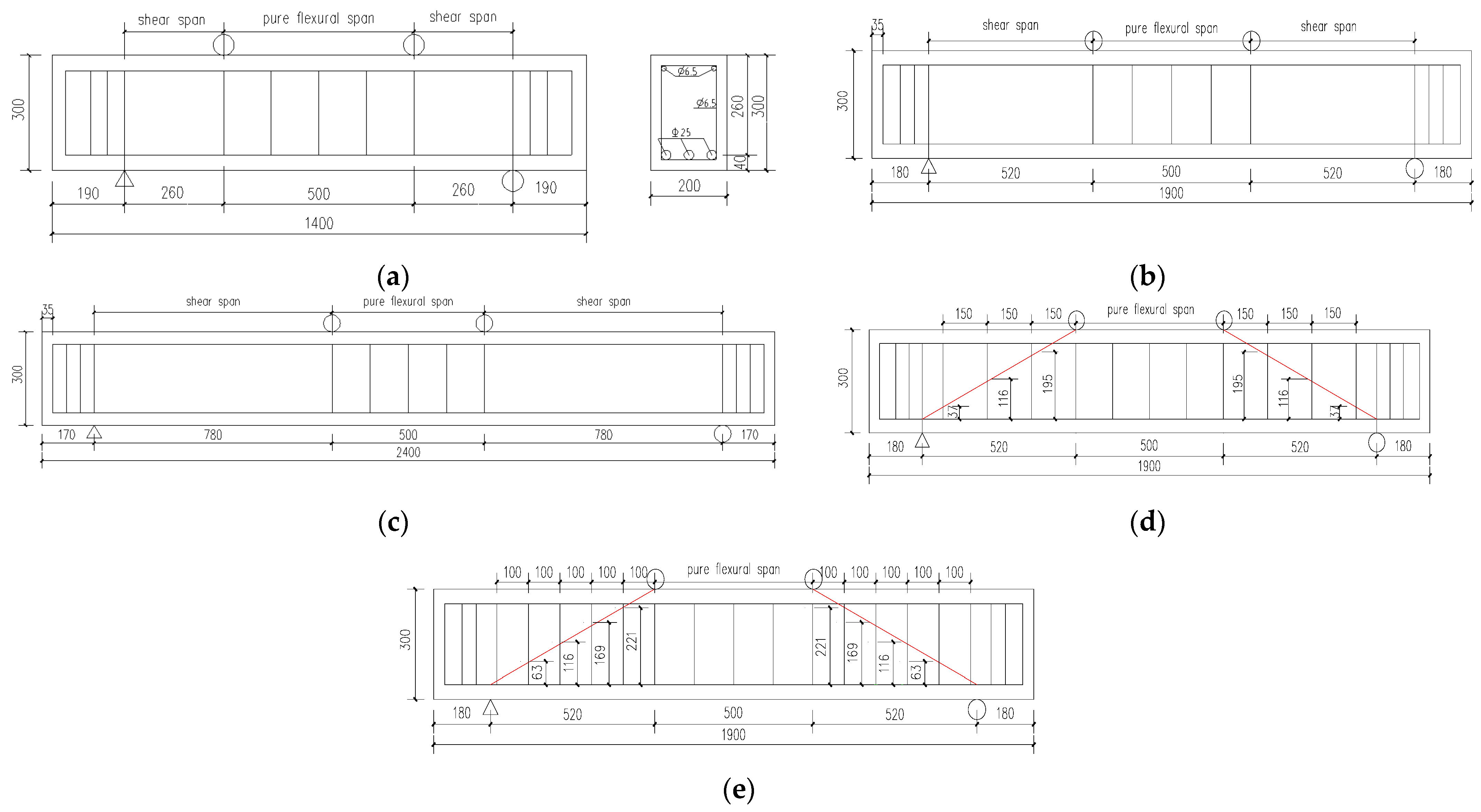


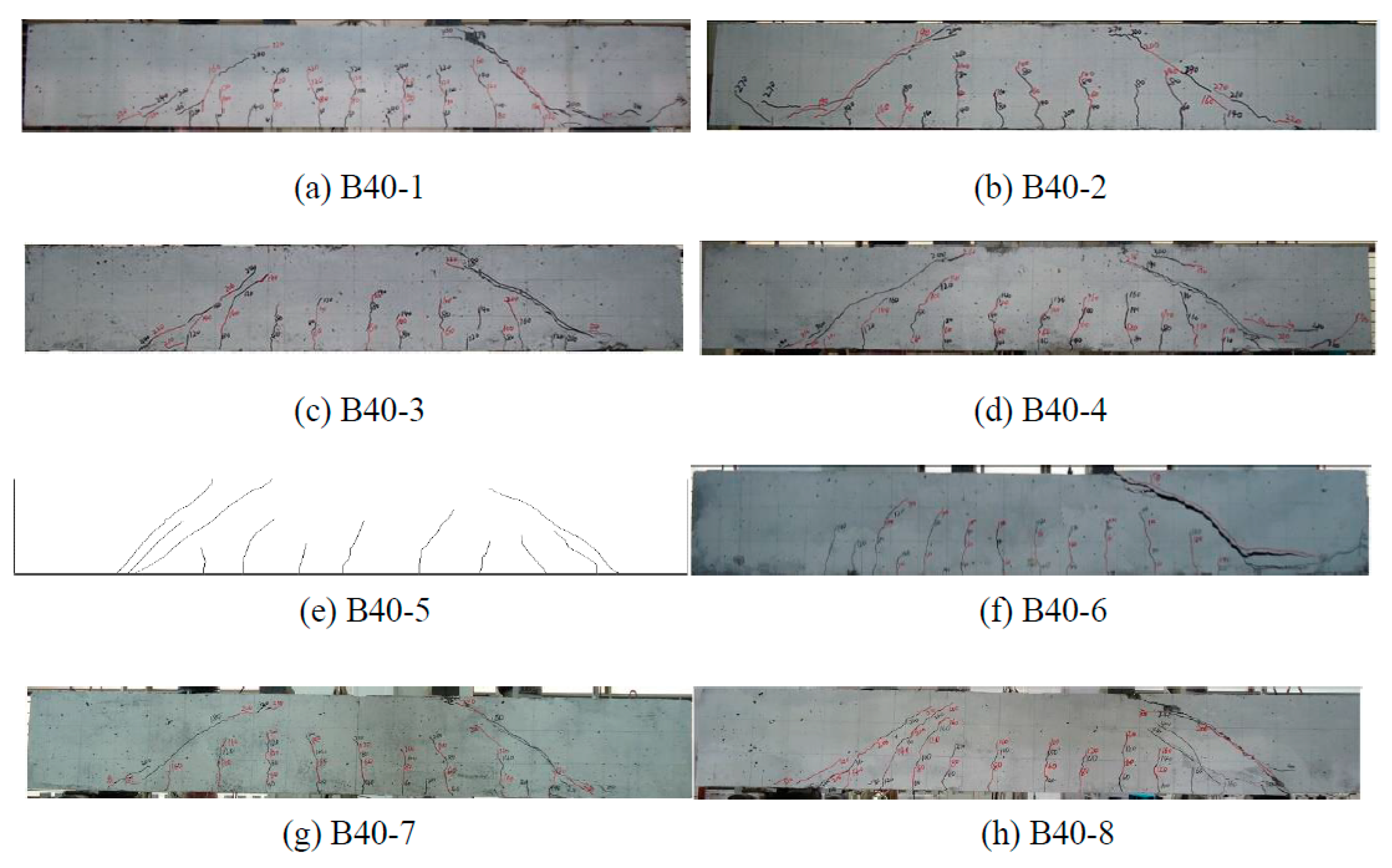

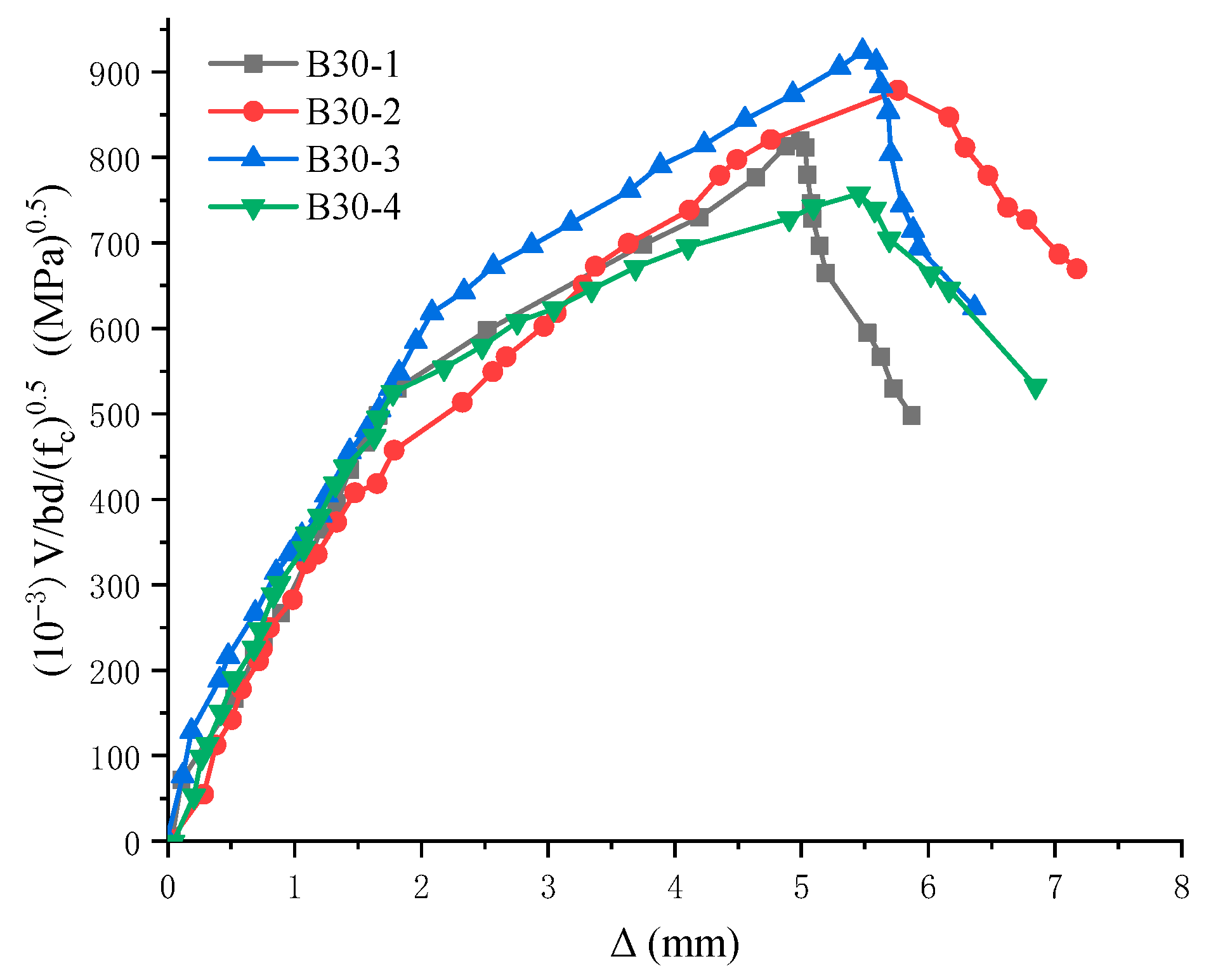

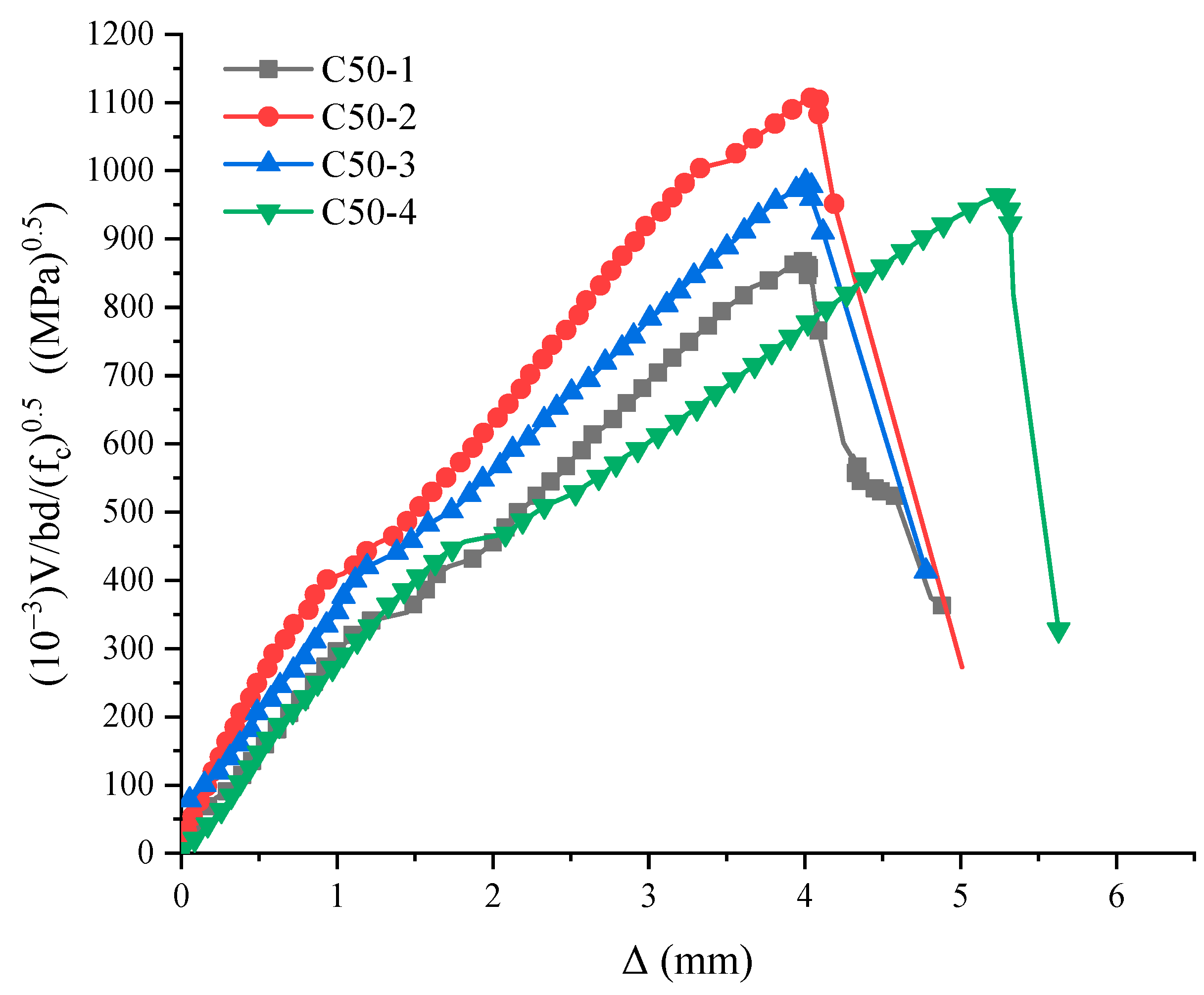
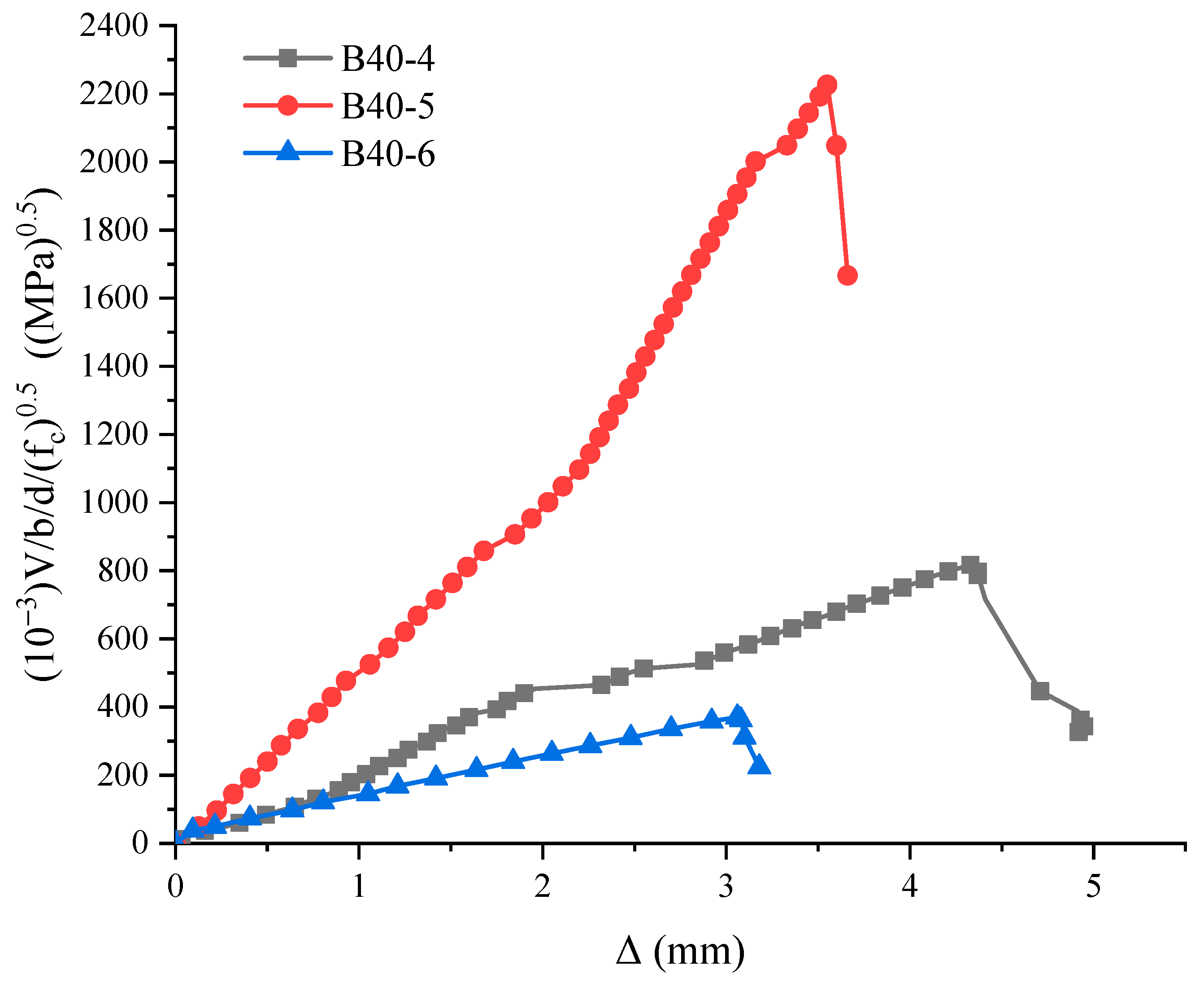
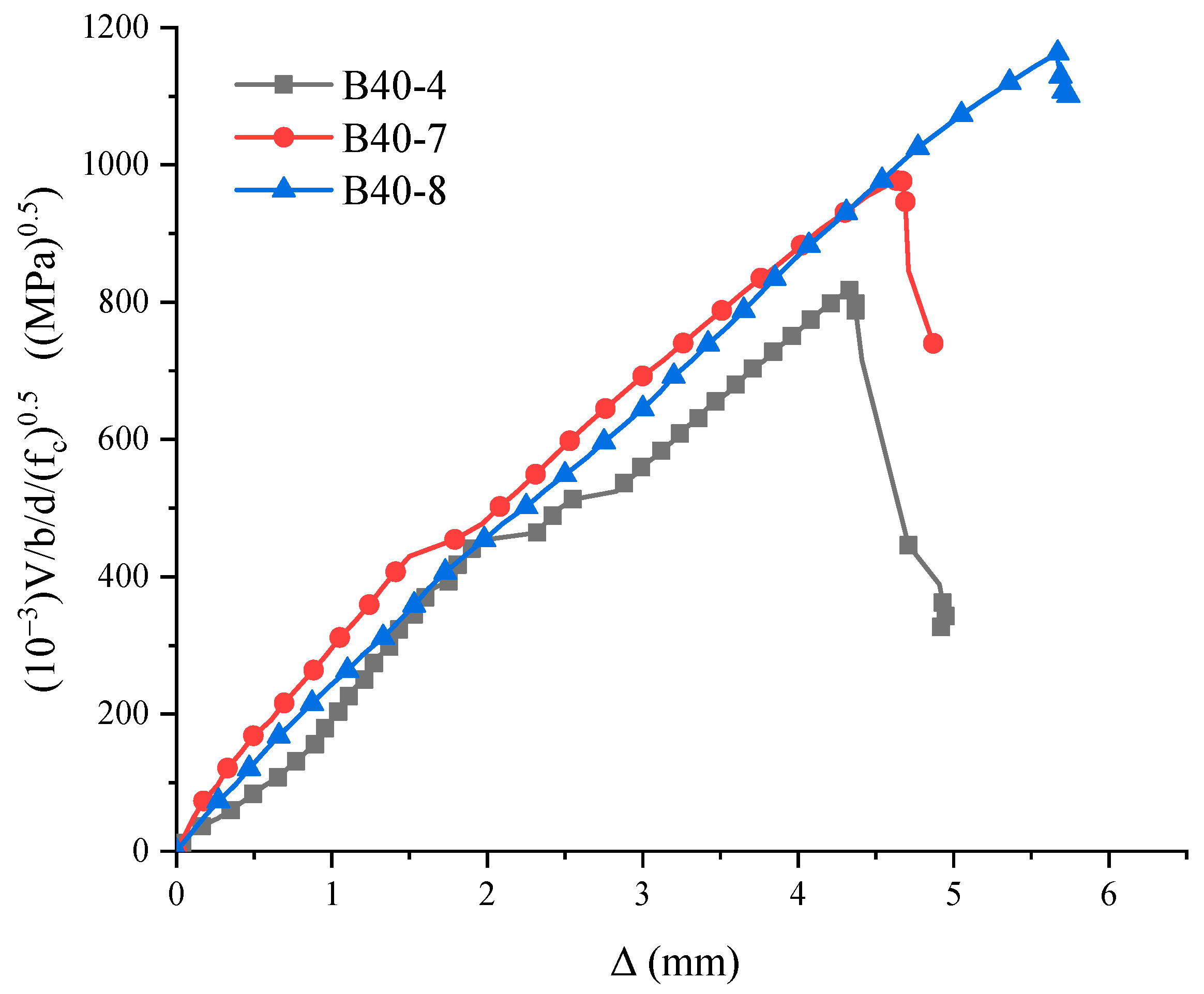




| Specimen | Concrete Grade | Post-Filling Aggregate Ratio % | Unit Volume Mass/(kg·m−3) | Slump (mm) | ||||||
|---|---|---|---|---|---|---|---|---|---|---|
| Cement (kg) | Fly Ash (kg) | Sand (kg) | Coarse Aggregate (kg) | Water (kg) | Water Reducer (kg) | Post-Filling Coarse Aggregate (kg) | ||||
| C30-0 | C30 | 0 | 352 | 88 | 716 | 1074 | 220 | 4.4 | 0 | 200 |
| C30-10 | C30 | 10 | 317 | 79 | 644 | 967 | 198 | 4.0 | 265 | 150 |
| C30-15 | C30 | 15 | 299 | 75 | 609 | 913 | 187 | 3.7 | 397.5 | 145 |
| C30-20 | C30 | 20 | 282 | 70 | 573 | 859 | 176 | 3.5 | 530 | 120 |
| C30-25 | C30 | 25 | 264 | 66 | 537 | 806 | 165 | 3.3 | 662.5 | 100 |
| C40-0 | C40 | 0 | 352 | 88 | 716 | 1074 | 198 | 5.72 | 0 | 190 |
| C40-10 | C40 | 10 | 317 | 79 | 644 | 967 | 178 | 5.1 | 265 | 150 |
| C40-15 | C40 | 15 | 299 | 75 | 609 | 913 | 168 | 4.9 | 397.5 | 140 |
| C40-20 | C40 | 20 | 282 | 70 | 573 | 859 | 158 | 4.6 | 530 | 90 |
| C40-25 | C40 | 25 | 264 | 66 | 537 | 806 | 149 | 4.3 | 662.5 | 80 |
| C50-0 | C50 | 0 | 388 | 97 | 705 | 1058 | 194 | 7.28 | 0 | 220 |
| C50-10 | C50 | 10 | 349 | 87 | 635 | 952 | 175 | 6.6 | 265 | 170 |
| C50-15 | C50 | 15 | 330 | 82 | 599 | 899 | 165 | 6.2 | 397.5 | 150 |
| C50-20 | C50 | 20 | 310 | 78 | 564 | 846 | 155 | 5.8 | 530 | 115 |
| C50-25 | C50 | 25 | 291 | 73 | 529 | 794 | 146 | 5.5 | 662.5 | 90 |
| Concrete Grade | Post-Filling Aggregate Ratio (%) | Compressive Strength of Concrete at 7 Days fcu (7 d) (MPa) | Compressive Strength of Concrete at 28 Days fcu (28d) (MPa) |
|---|---|---|---|
| C30 | 0 | 20.5 | 32.44 |
| 10 | 25.15 | 36.51 | |
| 15 | 26.02 | 38.22 | |
| 20 | 26.94 | 39.08 | |
| 25 | 26.33 | 38.16 | |
| C40 | 0 | 28.93 | 40.87 |
| 10 | 32.68 | 43.42 | |
| 15 | 35.41 | 46.25 | |
| 20 | 38.49 | 49.01 | |
| 25 | 33 | 44.1 | |
| C50 | 0 | 41.1 | 54 |
| 10 | 46.3 | 59.7 | |
| 15 | 46.4 | 60.5 | |
| 20 | 47.5 | 64.8 | |
| 25 | 40.8 | 53.1 |
| Specimen | L (mm) | Concrete Grade | Filling Ratio (%) | λ | Stirrup Reinforcement Ratio ρsv (%) |
|---|---|---|---|---|---|
| B30-1 | 1900 | C30 | 0 | 2 | 0 |
| B30-2 | 1900 | C30 | 10 | 2 | 0 |
| B30-3 | 1900 | C30 | 15 | 2 | 0 |
| B30-4 | 1900 | C30 | 20 | 2 | 0 |
| B40-1 | 1900 | C40 | 0 | 2 | 0 |
| B40-2 | 1900 | C40 | 10 | 2 | 0 |
| B40-3 | 1900 | C40 | 15 | 2 | 0 |
| B40-4 | 1900 | C40 | 20 | 2 | 0 |
| B40-5 | 1400 | C40 | 20 | 1 | 0 |
| B40-6 | 2400 | C40 | 20 | 3 | 0 |
| B40-7 | 1900 | C40 | 20 | 2 | 0.22 |
| B40-8 | 1900 | C40 | 20 | 2 | 0.33 |
| B50-1 | 1900 | C50 | 0 | 2 | 0 |
| B50-2 | 1900 | C50 | 10 | 2 | 0 |
| B50-3 | 1900 | C50 | 15 | 2 | 0 |
| B50-4 | 1900 | C50 | 20 | 2 | 0 |
| Specimen | ft (MPa) | fcu (MPa) | λ | ρsv (%) | Vcr (kN) | Δu (mm) | Vu (kN) | Vu, exp (kN) | Vu, cal (kN) | Vu, exp/Vu, cal |
|---|---|---|---|---|---|---|---|---|---|---|
| B30-1 | 2.86 | 32.44 | 2 | 0 | 120.3 | 4.96 | 280.8 | 280.8 | 104.0 | 2.70 |
| B30-2 | 3.05 | 36.51 | 2 | 0 | 131.8 | 5.73 | 319.5 | 319.5 | 111.0 | 2.88 |
| B30-3 | 3.12 | 38.22 | 2 | 0 | 150.2 | 5.46 | 343.8 | 343.8 | 113.7 | 3.02 |
| B30-4 | 3.17 | 39.08 | 2 | 0 | 138.6 | 5.43 | 285.1 | 285.1 | 115.2 | 2.47 |
| B40-1 | 3.28 | 40.87 | 2 | 0 | 150.0 | 4.52 | 351.7 | 351.7 | 119.3 | 2.95 |
| B40-2 | 3.39 | 43.42 | 2 | 0 | 192.5 | 4.72 | 380.8 | 380.8 | 123.6 | 3.08 |
| B40-3 | 3.54 | 46.25 | 2 | 0 | 179.0 | 4.93 | 419.2 | 419.2 | 128.8 | 3.26 |
| B40-4 | 3.62 | 49.01 | 2 | 0 | 195.0 | 4.33 | 353.3 | 353.3 | 131.8 | 2.68 |
| B40-5 | 3.62 | 49.01 | 1 | 0 | 356.8 | 3.55 | 950.0 | 950.0 | 131.8 | 7.21 |
| B40-6 | 3.62 | 49.01 | 3 | 0 | 153.8 | 3.06 | 153.8 | 153.8 | 131.7 | 1.17 |
| B40-7 | 3.62 | 49.01 | 2 | 0.22 | 180.1 | 4.66 | 412.0 | 412.0 | 162.8 | 2.53 |
| B40-8 | 3.62 | 49.01 | 2 | 0.33 | 180.2 | 5.67 | 480.6 | 480.6 | 178.3 | 2.70 |
| B50-1 | 3.58 | 54 | 2 | 0 | 151.5 | 3.99 | 382.7 | 382.7 | 130.4 | 2.93 |
| B50-2 | 3.79 | 59.7 | 2 | 0 | 161.5 | 4.04 | 513.2 | 513.2 | 137.9 | 3.72 |
| B50-3 | 3.89 | 60.5 | 2 | 0 | 197.0 | 4.00 | 460.4 | 460.4 | 141.4 | 3.26 |
| B50-4 | 4.00 | 64.8 | 2 | 0 | 217.0 | 5.26 | 466.7 | 466.7 | 145.5 | 3.21 |
Publisher’s Note: MDPI stays neutral with regard to jurisdictional claims in published maps and institutional affiliations. |
© 2021 by the authors. Licensee MDPI, Basel, Switzerland. This article is an open access article distributed under the terms and conditions of the Creative Commons Attribution (CC BY) license (https://creativecommons.org/licenses/by/4.0/).
Share and Cite
Jia, J.; Cao, Q.; Zhang, L.; Hu, Y.; Meng, Z. Shear Behavior of Reinforced Post-Filling Coarse Aggregate Concrete Beams Produced by Creative Construction Process. Buildings 2021, 11, 576. https://doi.org/10.3390/buildings11120576
Jia J, Cao Q, Zhang L, Hu Y, Meng Z. Shear Behavior of Reinforced Post-Filling Coarse Aggregate Concrete Beams Produced by Creative Construction Process. Buildings. 2021; 11(12):576. https://doi.org/10.3390/buildings11120576
Chicago/Turabian StyleJia, Jinqing, Qi Cao, Lihua Zhang, Yulong Hu, and Zihan Meng. 2021. "Shear Behavior of Reinforced Post-Filling Coarse Aggregate Concrete Beams Produced by Creative Construction Process" Buildings 11, no. 12: 576. https://doi.org/10.3390/buildings11120576
APA StyleJia, J., Cao, Q., Zhang, L., Hu, Y., & Meng, Z. (2021). Shear Behavior of Reinforced Post-Filling Coarse Aggregate Concrete Beams Produced by Creative Construction Process. Buildings, 11(12), 576. https://doi.org/10.3390/buildings11120576







